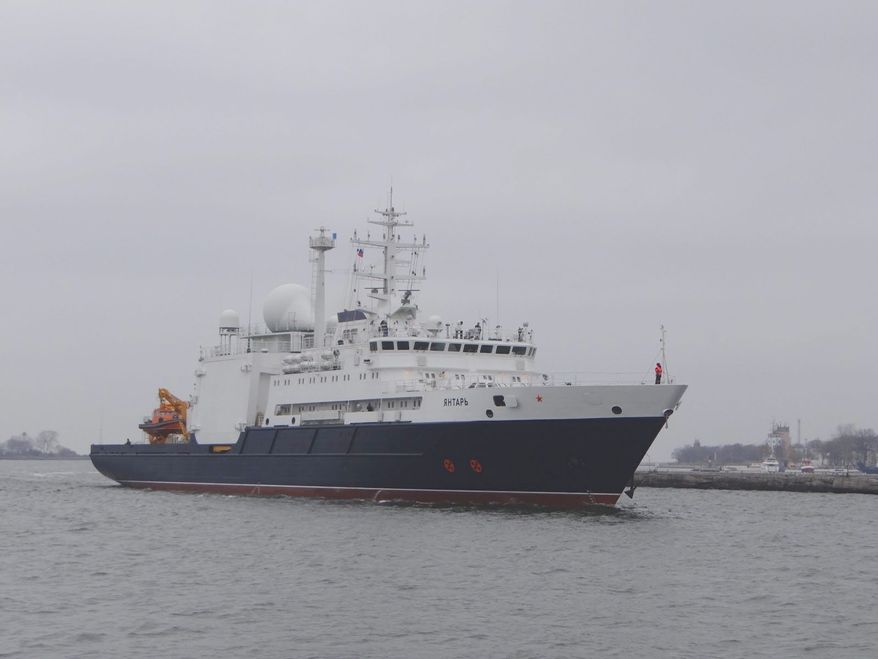Russia possibly mapping underwater internet cables in Mediterranean
WT: Approximately one year ago, the Russian navy caused quite a stir by hanging around internet cables in the Atlantic for some period of time.
Steffan Watkins, an open-source intelligence analyst who monitors Russian ship movements, said the Russian navy sends vessels such as Yantar to the region to check on existing U.S. underwater sensors or cables that have been detected previously. The ships also search for new equipment on the sea floor that would reveal U.S. operations.
The accusation was the Russians were mapping the cables in order to be able to sever them in times of conflict.
The Russian fleet in the Mediterranean seems to be doing the same thing this week over cables off the Syrian coast.
News.com.au writes, “Author and military analyst H.I. Sutton is one of several observers who have noted the unusual activity of a suspected Russian survey ship, the Yantar, in waters between Cyprus, Syria, Lebanon and Turkey in recent weeks.
It’s reported positions have been coinciding with the tracks of three major undersea fibre-optic cables. Mr Sutton’s blog suggests the extremely slow speed and frequent stopping of the ship suggest it could be deploying a submersible to the sea floor.”
If internet cables were severed that were supporting Western information flow, this could cause great economic disruption and take a very long time to repair, especially in time of war.
It seems likely that Russia wants this capability to inflict great damage on the European and American economies if need be.
Another possibility is that the Russian navy could be deploying devices to monitor information through the cables for espionage reasons.
(Bloomberg) — U.K. warships are monitoring a Russian aircraft-carrier group sailing past Britain’s eastern coast to the Mediterranean Sea to supplement President Vladimir Putin’s forces in the region, as international condemnation mounts of Russia’s military campaign in Syria.
A photo taken from a Norwegian surveillance aircraft shows a group of Russian navy ships in international waters off the coast of Northern Norway on October 17, 2016. 333 Squadron, Norwegian Royal Airforce/NTB Scanpix/Handout via Reuters
The deployment signals Putin’s determination to assert Russian interests as U.S. and European leaders accuse him of war crimes and dangle the threat of sanctions in response to the bombing of Aleppo by Russian warplanes.
Putin floated a possible extension of a cease-fire for the besieged Syrian city during a late-night meeting in Berlin on Wednesday with French President Francois Hollande and German Chancellor Angela Merkel that she portrayed as testy. Merkel and Hollande will meet again in Brussels on Thursday for a two-day summit of the EU’s 28 leaders that will consider a common response to Russia’s actions in support of Syrian President Bashar Al-Assad.
“We must show a robust and united European stance in the face of Russian aggression,” U.K. Prime Minister Theresa May told reporters as she arrived for her first summit. While Britain is leaving the EU, until it does “it’s vital that we work together to continue to put pressure on Russia to stop its appalling atrocities, its sickening atrocities in Syria,” she said.
May’s comments hint at the growing outrage over the bombing by Russian and Syrian forces of Aleppo, where some 275,000 inhabitants remain trapped. Syria’s government opened two crossings for fighters who want to leave the rebel-held eastern part of the contested city, a day after announcing a three-day humanitarian pause to its offensive.
Northern Fleet
Russia’s Northern Fleet, based at Severomorsk near the Finnish border, said last week that a naval group had set out for the northeast Atlantic en route to the Mediterranean “to ensure naval presence in the important areas” of the seas, according to the TASS news agency. The ships include the Admiral Kuznetsov, Russia’s only aircraft carrier.
“When these ships near our waters we will man-mark them every step of the way,” U.K. Defense Secretary Michael Fallon said in an e-mailed statement on Thursday. “We will be watching as part of our steadfast commitment to keep Britain safe.”
Russia said last month that its permanent naval group already stationed in the Mediterranean numbers about 10 warships and support vessels. Igor Konashenkov, a Defense Ministry spokesman in Moscow, declined to comment on the additional deployment.
Russian Responsibility
Speaking after the Berlin talks that stretched into early Thursday, Putin said Russia would halt its bombing of Aleppo as long as “terrorist forces” aren’t active. At a separate news conference alongside Merkel, Hollande said Putin didn’t specify how long such a cease-fire might last. “We hope it’s as long as possible” to allow for humanitarian aid to reach all parts of the city, he said.
European foreign ministers will work on getting aid to the area, which would “at least be a first step that we haven’t seen in a long time,” Merkel said. “It was right to use this blunt language” in the talks with Putin because “Russia bears a clear responsibility in Syria, including exerting influence over” Assad, the German leader said.
Merkel and Hollande kept the threat of sanctions against Russia on the table, while saying the focus had to be on helping civilians in Aleppo.
Hollande said that at best the European Union could target individuals, while Merkel limited herself to saying that “you can’t deny yourself the option.” Either way, any sanctions would require the approval of all 28 member states and the most ardent support for such an approach came from the U.K, which has voted to leave the bloc. Russia already is under EU and U.S. sanctions for its encroachment on Ukraine.
“The conclusion in the European Union is that we don’t believe in new sanctions at this phase because we already have sanctions and these run until the end of January,” Finnish Prime Minister Juha Sipila said in an interview in Helsinki on Wednesday. “In December or January we will have a discussion about the future of sanctions.’’
Minsk Accord
The Syria talks followed a discussion on Ukraine that was also attended by Ukrainian President Petro Poroshenko. Merkel and Poroshenko said the four leaders agreed to work on a “road map” of measures to advance last year’s Minsk accords for ending the conflict in eastern Ukraine between government forces and Russian-backed separatists.
In Brussels, Estonian Prime Minister Taavi Roivas, whose country borders Russia, said EU leaders must deliver “a very clear message to both the Syrian regime and its allies, mainly Russia.” He compared Aleppo with the Chechen capital, Grozny, that was reduced to rubble by Russian aerial bombing in the 1990s. “This is absolutely unacceptable,” Roivas said.
Category Archives: Failed foreign policy
Mastermind of Europe’s Terror Attacks Identified
U.S. Identifies Key Player in ISIS Attacks on Europe
Frontline: Almost a year after Islamic State terrorists killed 130 people in Paris, U.S. intelligence agencies have identified one of the suspected masterminds of that plot and a follow-up attack in Brussels.
U.S. counter-terror officials said the man, who goes by the name Abu Sulaiyman al Fransi (Abu Sulaiyman, the Frenchman) is a 26-year old Moroccan who once served in Afghanistan as a soldier in the French Foreign Legion. He did prison time for drug running before going to Syria in 2014 and joining ISIS, according to U.S. officials and French court documents. His real name is Abdelilah Himich, according to U.S. counter-terror officials.
Despite his relative youth, Himich’s military experience and knowledge of France have made him a key figure in the Islamic State’s external operations unit, which has led a terror campaign against Europe, officials said. He is thought to be in Syria.
“We believe he is one of the top guys involved in spearheading the Paris attack and the Brussels attacks,” a U.S. counter-terror official said. “He was involved in creating that infrastructure” of the external operations unit.
U.S. and European counter-terror officials were interviewed for this story as part of a report by ProPublica and FRONTLINE about terrorism in Europe.
Officials acknowledged that they have struggled to pin down details about the identities and activities of the ISIS planners. U.S. and European counter-terror officials note that several Islamic State fighters have used the nom de guerre Abu Sulaiyman al Fransi. (The nickname is spelled in a number of ways, U.S. officials say.) In the past, he has variously been described by European officials and media reports as a blond convert and a former physical education teacher.
But U.S. officials said there was strong evidence indicating that the senior French fighter in question is Himich. They said French intelligence has been informed of that assessment and agrees with it.
Click here to see the full documentary.
European counter-terror officials interviewed by ProPublica earlier this year said they also suspect that a militant known as Abu Sulaiyman the Frenchman helped to plan the Paris and Brussels attacks. But they did not disclose his full identity.
Officials said that months of investigations and intelligence work in Europe and the Middle East have begun to shed light on the command structure of what the Islamic State calls external operations. The predominantly Arab leaders of ISIS have given senior and mid-level European fighters considerable autonomy to select targets and decide details of plots in their home turf, according to Western counter-terror officials.
Nonetheless, the ISIS unit that plots attacks overseas is also quite bureaucratized, according to U.S. intelligence officials. The unit exerted increasingly direct control over plots in Europe starting in 2015, according to Western counter-terror officials, and is part of an ISIS intelligence structure known as the Enmi.
“ISIS-directed plots in Europe have usually involved several planners and organizers who might change for each project,” said Jean-Charles Brisard, the chairman of the Center for the Analysis of Terrorism in Paris, who has been studying the unit. “It’s more a team process than a single mastermind’s plan.”
Abu Mohamed al-Adnani, a Syrian who served as a spokesman for the Islamic State, was a top figure overseeing external operations, counter-terror officials say. A U.S. drone strike killed Adnani in August.
There is hard evidence that another ISIS militant in Syria, a man known as Abu Ahmad, played a hands-on role in the Paris and Brussels cases, according to European counter-terror officials. A laptop computer recovered by Belgian police after the Brussels bombings in March contained encrypted communications detailing Abu Ahmad’s direct role in the plot.
During the four months after the Paris attacks, Abu Ahmad discussed targets, strategy and bomb-making techniques from Syria via encrypted channels with survivors of the terrorist cell who were hiding in Brussels. The fugitive suspects referred to Abu Ahmad as their “emir,” or leader, according to Belgian counter-terror officials.
The communications in the laptop indicate that the original plan was to hit France again, European officials say. When Belgian police closed in, however, Abu Ahmad told the fugitives to strike in Brussels instead, officials said. The suicide bombings killed 32 people at the airport and a subway station on March 22.
Abu Ahmad was described by two captured ISIS fighters as a lead planner of the Paris massacre as well. The suspects, an Algerian and a Pakistani, told interrogators that Abu Ahmad chose and prepared them for the plot last fall, and sent them to Europe posing as Syrian refugees, according to European counter-terror officials.
When the two landed in Greece in October, however, Greek border guards discovered they were not Syrian, and held them for a few weeks, according to European and U.S. counter-terror officials. After being released, the duo communicated with Abu Ahmad, who sent them money and instructions not to join the rest of the attackers, according to officials. The two suspects were arrested in Austria in December.
The men described Abu Ahmad as a Syrian, according to European counter-terror officials. But the recovered clandestine communications with the plotters in Europe indicate clearly that he speaks French, raising questions about his true nationality, the officials said.
“He has to be French, or speak French well,” a European counter-terror official said. “They use French slang.”
The investigation shows that Abu Ahmad worked with the senior fighter known as Abu Sulaiyman al Fransi, according to European and U.S. counter-terror officials. During the massacre at the Bataclan concert hall in Paris, witnesses overheard gunmen talk to each other about calling a person named Abu Sulaiyman, according to European and U.S. officials.
Himich, the man identified by U.S. intelligence as Abu Sulaiyman, has an unusual story. He was born in Rabat, Morocco, in 1989, according to U.S. counter-terror officials and French court documents. His family emigrated when he was an adolescent to Lunel, a southern French town about 20 miles from Montpellier, officials say.
Lunel has a population of about 25,000 and a rich history as a Jewish cultural center in medieval times. The town has a large population of Muslim descent as the result of immigration from North Africa beginning in the 1960s.
In 2006, Himich’s name appeared in a Lunel high school newspaper as the author of an article about teenage drinking. Although he went to school in France, he remains a Moroccan citizen, according to officials and court documents. In 2008, he joined the French Foreign Legion, a legendary and hard-nosed force whose soldiers come from all over the world.
Himich “distinguished himself during various missions in Afghanistan,” according to the court documents. In 2010, however, he deserted, according to the officials and documents.
“Wanting to attend the burial of his father, he left his post without authorization,” the documents say. “After his return to France, he did vocational training to work in the security field and also considered becoming a nurse.”
A year later, he got in trouble with the law. French customs police intercepted him arriving on a train from Amsterdam at the Gare du Nord station in Paris on Dec. 13, 2011, according to court documents. Police discovered he was carrying a backpack containing 2.6 pounds of cocaine with a street value of about $55,000. He also tested positive for cocaine and marijuana.
Himich testified that he had met a Senegalese man at a hookah bar in Paris, and told him he needed money because he had left the Foreign Legion. Himich said the man hired him to bring a package from Rotterdam, offering to pay $1,600. Himich, whom the documents describe as “adopting an arrogant attitude” during a court hearing, denied knowing that the package contained drugs.
Himich spent five months in jail. He was convicted in April 2013, and sentenced to three years in prison with a year suspended, according to the documents, though it appears he did not spend much more time behind bars. It was his first criminal conviction. He appears to have followed a classic trajectory from crime into radicalization.
Despite its picturesque setting, Lunel has made headlines as a hub of extremism. By 2015, at least two dozen young people — of North African descent as well as Muslim converts — had left Lunel to fight in Syria, where at least six of them died.
Himich joined that exodus in early 2014, according to U.S. counter-terror officials. He rented a car and drove via Italy, Greece and Turkey to Syria, according to Brisard. That route is popular with Syria-bound jihadis who travel with their families, according to Italian police. Himich has a wife and two children, officials said.
In Syria, Himich first fought in an Al Qaeda-linked group, officials say. Then, like many extremists in Syria, he moved to the increasingly powerful Islamic State. He soon became a battlefield commander, according to U.S. officials and Brisard, the French counter-terror expert.
“He was quickly promoted by ISIS to lead one of its fighting brigades in the first half of 2014,” Brisard said. “His rapid rise within ISIS could be explained by his military service in the French Foreign Legion.”
France and Interpol have issued warrants for Himich’s arrest on suspicion of terrorist activity, according to U.S. officials.
Investigators believe Himich is among a group of ISIS militants in their 20s and 30s, predominantly Francophones, who plot against Europe. The group also includes two Muslim convert brothers from Toulouse, Fabien and Jean-Michel Clain, according to counter-terror officials. Fabien Clain is believed to be the Frenchman who read the official statement in which the Islamic State claimed responsibility for the Paris attacks, officials say.
The Clain brothers surfaced in an investigation in 2009 of a French-Belgian extremist network. Suspects in that case had been investigated for a bombing in Cairo and, according to investigators, told Egyptian interrogators they had discussed a potential attack on the Bataclan, the nightclub that was hit in 2015. The suspects allegedly saw the Paris concert hall as a Jewish target because the owners were Jewish and the venue had hosted pro-Israel events.
Given his military experience, Himich’s stature is likely to grow after the recent deaths of Islamic State leaders in U.S. air strikes, officials said.
“He’s probably one of the most important Frenchmen in ISIS, especially after the death of Adnani,” the U.S. counter-terror official said.
FBI Sent Guccifer 1.0 Back to Romania but Guess What was Found?
Exactly, what is the FBI under Comey really doing and why? America needs answers and perhaps a real vote of lack of confidence in his role as Director.
Guccifer Sent Back To Romanian Prison
Hacker, who exposed private email server of Hillary Clinton, will return to US in 2018 to serve 52-month jail term.
DR: Cybercriminal Marcel Lazar, more popularly known as “Guccifer,” has been sent back to Romania to finish a seven-year jail term from a previous conviction in Romania on the request of the Romanian Justice Ministry, reports The Washington Times. Guccifer was already serving his sentence, when he was extradited to the US in April 2016 to face charges of multiple felonies.
A US court last month sentenced the hacker to 52 months in prison for a number of high-level computer breaches in the country targeting former Secretary of State Colin Powell and Hillary Clinton advisor Sidney Blumenthal, among others. Guccifer leaked content of emails and also exposed that presidential candidate Clinton used a private server to send and receive classified emails while Secretary of State.
On completion of his term in Romania in 2018, the hacker will be sent back to the US to serve his time in this country.
If that is not disturbing enough, check this out:
FBI: Sidney Blumenthal’s Computer Files Are Found On A Romanian Server
Related reading: DEALING WITH A “ROGUE STATE”: THE LIBYA PRECEDENT
Even Russian Diplomats in DC are Trolling Obama Admin
The Russian embassy in Washington tweeted at US’s Kerry, UK’s Johnson, saying Grozny is peaceful and modern
In 2003, the UN called Grozny the most destroyed city on earth
MEE: Russia’s embassy in Washington, DC, trolled the US and UK in a tweet on Monday, comparing its bombing of the Chechen capital of Grozny 16 years ago to its offensive on Syria’s Aleppo today.
In 2003, the United Nations described the Chechen capital Grozny as the most destroyed city on earth. Thirteen years later, the UN envoy to Syria warned that Aleppo may be totally destroyed in two months.
Russia besieged and bombed Grozny for months during the Second Chechen War to capture the city from rebels, including Islamist militants. While observers have drawn parallels between the Chechen capital and Aleppo to condemn Moscow, the Russian embassy in Washington used the comparison to make a case for the Kremlin’s intervention in Syria.
Russia, whose forces are fighting in support of the Syrian government, is leading a bombing campaign against rebel-held east Aleppo.
The embassy tweeted photos of the rebuilt Chechen city, addressing US Secretary of State John Kerry and British Foreign Minister Boris Johnson.
“#Grozny today is a peaceful, modern, and thriving city. Ain’t that a solution we’re all looking for? @JohnKerry? @BorisJohnson? | #Aleppo,” the embassy wrote in the tweet.
***
#Grozny today is a peaceful, modern, and thriving city. Ain’t that a solution we’re all looking for? @JohnKerry? @BorisJohnson? | #Aleppopic.twitter.com/4VWOyVudGX
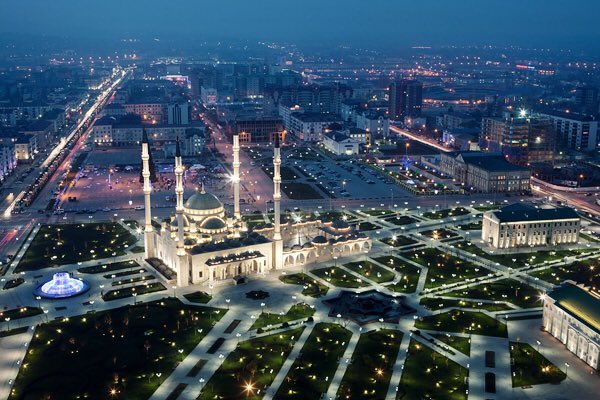
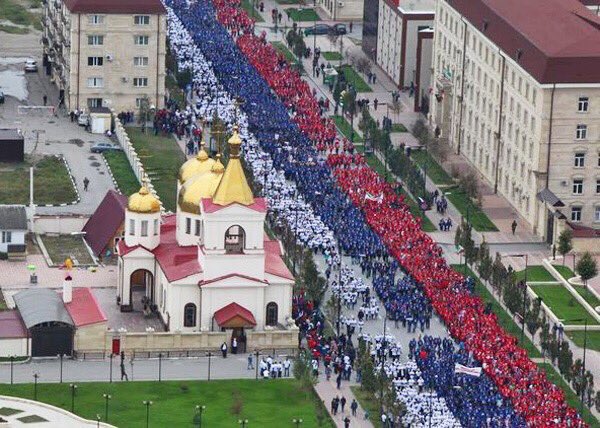
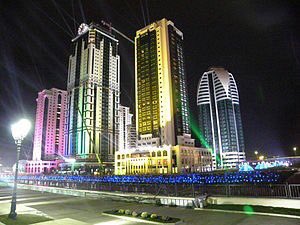
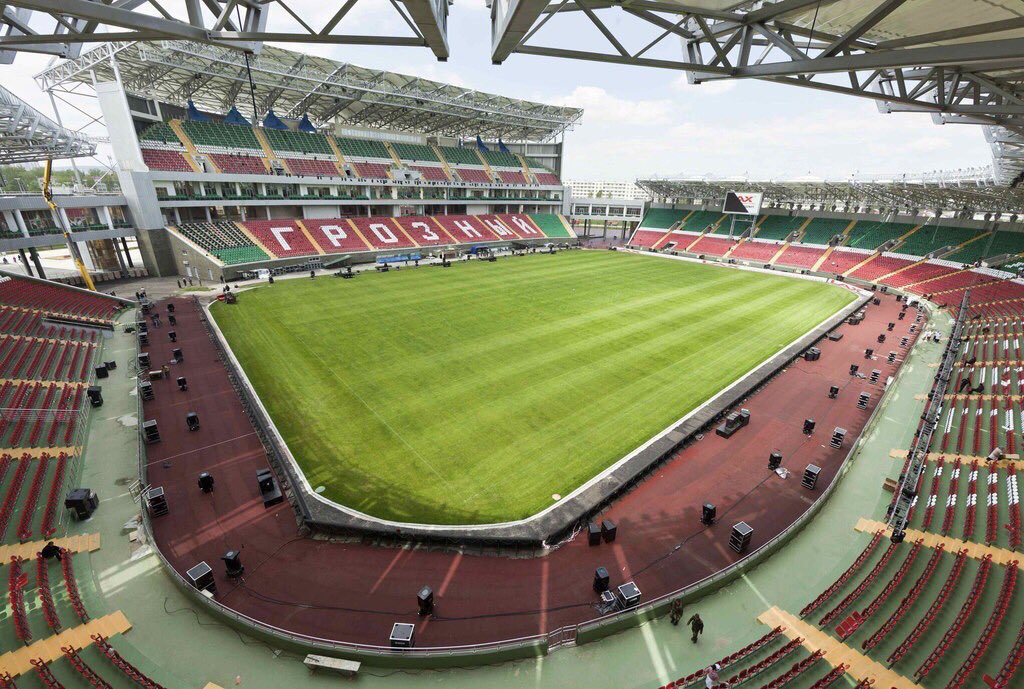
Internet users were quick to point to the misery brought to Chechnya by the Russian war.
***
In its sick trolling, @RusEmbUSA seems to have lost the images of what it is responsible for in #Grozny. #Russia brings war, not peace.pic.twitter.com/BJrlVAkfr2
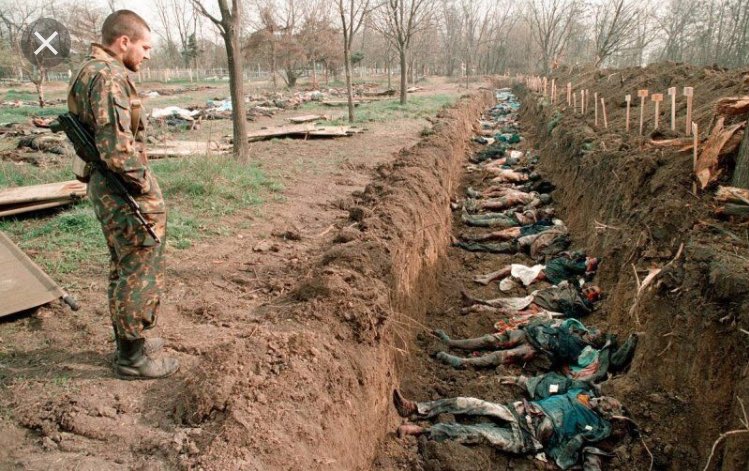
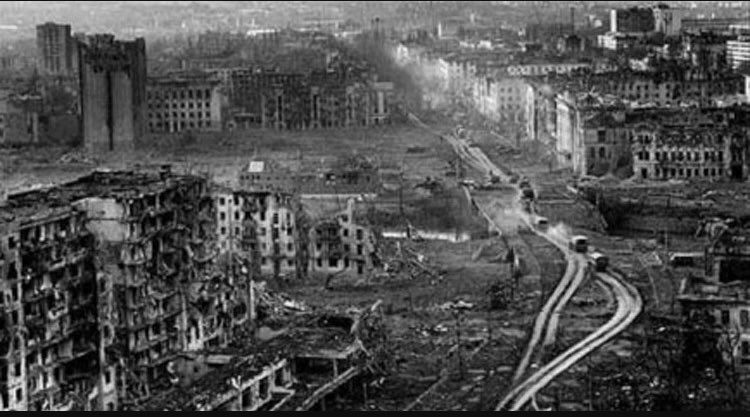
The Russian army and pro-Moscow Chechen forces fought off separatists and Islamists to take control of Grozny in a campaign that started in 1999. The war ended the Chechen de-facto autonomy and returned the region to Moscow’s control.
“Russian forces have committed grave abuses, including war crimes, in their campaign in Chechnya,” reads a 2000 Human Rights Watch report. “In Grozny, the graffiti on the walls reads ‘Welcome to Hell: Part Two,’ about as good a summary as any of what Chechen civilians have been living through in the past five months.”
After the war, dozens of mass graves containing the remains of civilians were discovered across Chechnya.
“@RusEmbUSA, above how many mass graves are these nice buildings erected?!.. @JohnKerry @BorisJohnson,” a visiting scholar in Carnegie’s Middle East Programme, tweeted in response to the embassy’s tweet.
Twitter has been used as a medium for political statements between officials and states in recent regional spats.
Last week, Iraqi Prime Minister Haider al-Abadi tweeted at Turkish President Recep Tayyip Erdogan to taunt him about his video call message during the failed coup in July after the latter told him to “know his place” in a dispute about the presence of Turkish forces in northern Iraq.
UK Sanctions Russian Bank Accounts, then their Base(s) in Syria
Russia Today’s UK bank accounts closed down, says editor
Unclear whether British government responsible for shutting down accounts of Moscow’s main instrument of propaganda in English-speaking world
Guardian: The UK bank accounts of Russian TV broadcaster Russia Today have been shut down, its editor-in-chief has said, in a move that the UK government appears to have been aware of.
In a tweet in Russian Margarita Simonyan said that “all the accounts” had been closed in the UK. She said the decision was final, adding sarcastically: “Long live freedom of speech!”
The channel received a letter from NatWest bank, Simonyan said. It said: “We have recently undertaken a review of your banking arrangements with us and reached the conclusion that we will no longer provide these facilities.”
The bank said that the entire Royal Bank of Scotland Group, of which NatWest is a part, would refuse to handle RT. According to Simonyan, the letter said the decision was final and that it was “not prepared to enter into any discussion in relation to it.”
It was unclear whether the British government was behind the move, but the foreign office was aware of the news when contacted by the Guardian and referred inquiries to the Treasury. The move – if confirmed – casts into doubt the ability of the Kremlin-backed news channel to carry on broadcasting. RT said on Monday it will continue operating.
The US and Britain said on Sunday that they were considering fresh measures and possible further sanctions against Moscow in protest at Russia’s continuing bombardment of civilians in eastern Aleppo.
Maria Zakharova, a Russian foreign ministry spokeswoman, wrote on Facebook: “It looks like, as it leaves the EU, London has decided to leave behind all its obligations towards freedom of speech. As they say, best to start a new life without bad habits.”
Russia Today – now known as RT – is the main instrument of propaganda for the Russian government in the English-speaking world. The channel presents itself as a left-leaning alternative to “mainstream news” under the slogan “Question More”?
In reality, however, its reporting assiduously reflects the Kremlin’s anti-western worldview. It has portrayed Russia’s military intervention in Syria as a campaign against terrorists, and reflects its official position that no civilians have been killed by Russian jets.
The channel typically invites studio guests who endorse the Kremlin’s anti-US views. Guests have included Jeremy Corbyn, Ken Livingstone and George Galloway. Another frequent contributor is the editor-in-chief of WikiLeaks, Julian Assange, who hosted his own chat show on RT.
Simonyan visited Assange in the Ecuadorian embassy during a trip to London in 2014.
In a statement on Monday RT struck a defiant tone, calling the decision “incomprehensible” and “without warning”. It added: “It is however not at odds with the countless measures that have been undertaken in the UK and Europe over the last few years to ostracize, shout down, or downright impede the work of RT.”
Since RT started broadcasting in the UK about 10 years ago, Ofcom has recorded breaches of the UK broadcasting rules on 14 occasions. It was last investigated in April for accusing the Turkish government of genocide against the Kurds.
******
Russia Advances its IADS in Syria
By Chris Harmer and Kathleen Weinberger
Over the last year, Russia has built up an expeditionary Integrated Air Defense System (IADS) in Syria. Russia intends to use this IADS to push the potential cost of continued US coalition involvement in Syria past the threshold of acceptable risk. On 03 OCT the Russian military deployed the S-300 (NATO reporting name: SA-23) air defense system to the Syrian naval base in Tartus. Russian forces already operate the S-400 (NATO reporting name SA-21 Growler) long-range air defense system, which has a claimed range of 400km, as well as the S-200 (SA-5 Gammon), in Syria. Russia also operates a number of short-range air defense systems, including the Pantsir-S1 and Buk missile systems, as well as the naval version of the S-300 a Slava-class guided missile cruiser in the Mediterranean. In addition to the IADS, Syrian forces operate the Bastion coastal defense system out of Tartus.
Now that the Russian IADS in Syria is deployed and presumably fully functional, it changes the regional security situation in two ways. First, it confirms that the ongoing Russian deployment of disparate missile systems to Syria over the past year always intended to culminate in a fully functional IADS, rather than individual missile systems in different locations. SAM systems in the S-300 family (including the S-400) are designed to be both forwards and backwards compatible, which means that their component parts – command and control modules, search and fire control radars, missile launchers and missiles – may be used in different combinations.
Second, this deployable and road mobile IADS solely aims to threaten US and coalition aircraft and deter further involvement or escalation of coalition operations. There is no credible fixed wing, rotary wing, or ballistic missile threat to Russian forces in Syria from ISIS or any other potential adversary that would require a modern IADS. The only purpose of this IADS is to pressure US and coalition policy makers to cede the majority of Syrian airspace to Russian and Syrian aircraft in order to continue their campaign of targeting civilian populations for destruction or depopulation, as evidenced by recent Russian threats to shoot down U.S. coalition aircraft. This expeditionary, modular, and mobile Russian IADS is a significant upgrade over the legacy Syrian IADS. The component parts of the Syrian IADS were largely fixed, difficult if not impossible to move, and highly dependent on centralized command and control as well as external long range radar cuing. The interdependency of the legacy Syrian IADS meant that destroying any one component of the Syrian IADS would significantly reduce its efficacy. In contrast, the Russian expeditionary IADS is fully road mobile, with partial offroad capability, and modular, meaning each component can operate as a standalone SAM system or be organized as a genuine IADS, which is what Russia has now achieved. The Russian expeditionary IADS is much more survivable than the legacy Syrian IADS.
U.S. officials, including presidential candidate Hilary Clinton, have suggested establishing a no-fly zone in parts of northern Syria. This would mean using U.S. aircraft to patrol Syrian airspace in order to prevent Russian and Syrian planes from carrying out strikes. Russian expansion of its IADS network means that U.S. coalition aircraft risk being shot down while operating within Russia’s A2AD envelope. A shoot-down of a U.S. coalition aircraft would force the U.S. to either drastically escalate in order to answer Russia’s provocation, or to downscale or cease operations in Syria. Russia aims to present the U.S. with these two undesirable options on the assumption that the U.S. would choose to avoid any potential conflict. By establishing this expeditionary IADS in Syria, Russia aims to establish a de facto no-fly zone for US and coalition aircraft over much of Syria.

